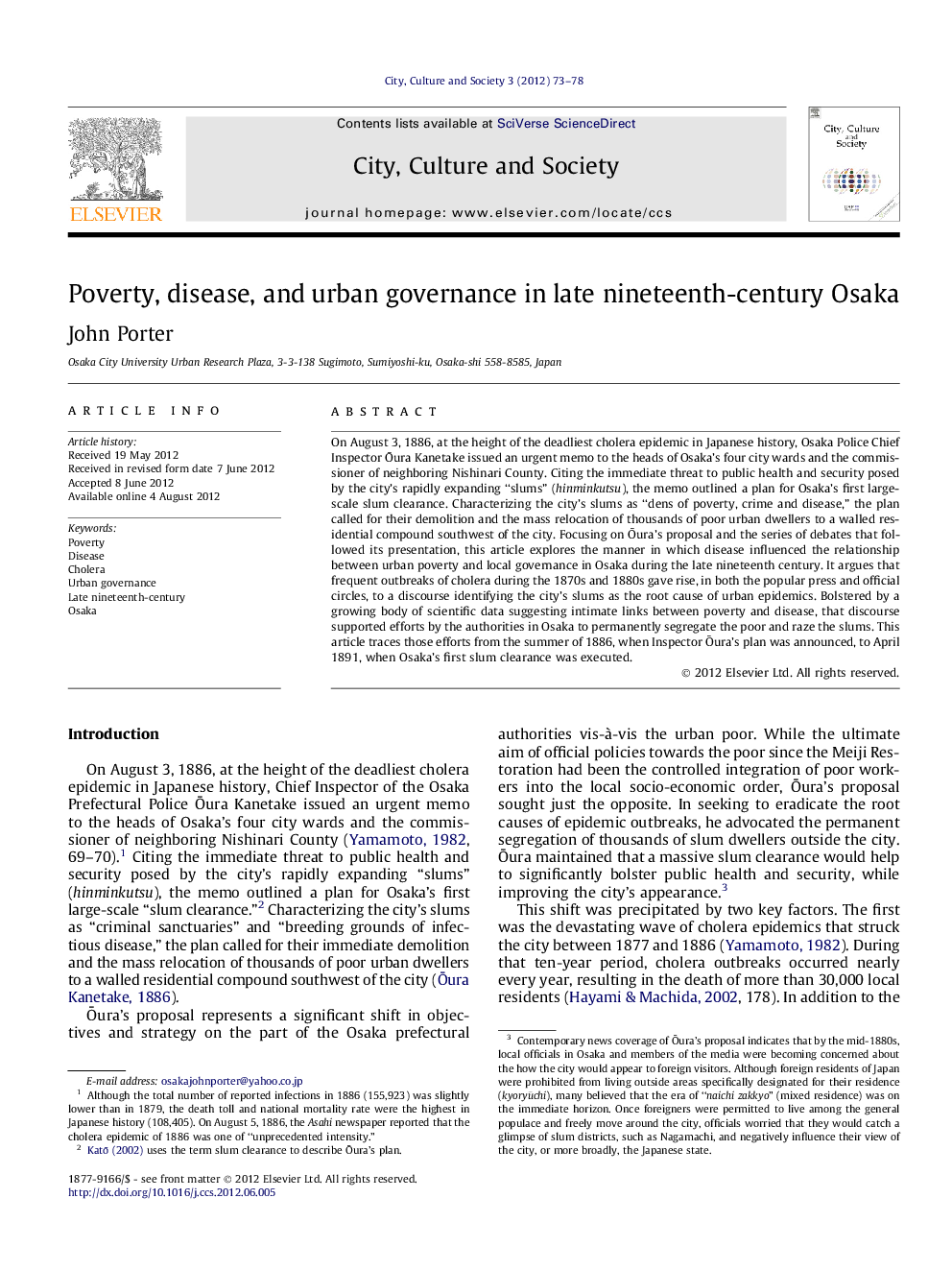| Article ID | Journal | Published Year | Pages | File Type |
|---|---|---|---|---|
| 5048338 | City, Culture and Society | 2012 | 6 Pages |
On August 3, 1886, at the height of the deadliest cholera epidemic in Japanese history, Osaka Police Chief Inspector Åura Kanetake issued an urgent memo to the heads of Osaka's four city wards and the commissioner of neighboring Nishinari County. Citing the immediate threat to public health and security posed by the city's rapidly expanding “slums” (hinminkutsu), the memo outlined a plan for Osaka's first large-scale slum clearance. Characterizing the city's slums as “dens of poverty, crime and disease,” the plan called for their demolition and the mass relocation of thousands of poor urban dwellers to a walled residential compound southwest of the city. Focusing on Åura's proposal and the series of debates that followed its presentation, this article explores the manner in which disease influenced the relationship between urban poverty and local governance in Osaka during the late nineteenth century. It argues that frequent outbreaks of cholera during the 1870s and 1880s gave rise, in both the popular press and official circles, to a discourse identifying the city's slums as the root cause of urban epidemics. Bolstered by a growing body of scientific data suggesting intimate links between poverty and disease, that discourse supported efforts by the authorities in Osaka to permanently segregate the poor and raze the slums. This article traces those efforts from the summer of 1886, when Inspector Åura's plan was announced, to April 1891, when Osaka's first slum clearance was executed.
⺠Traces the history of modern Osaka's first slum clearance. ⺠Explores how disease affected relationship between poverty and local governance. ⺠Argues that slums came to be seen as a key cause of nineteenth-century epidemics.
